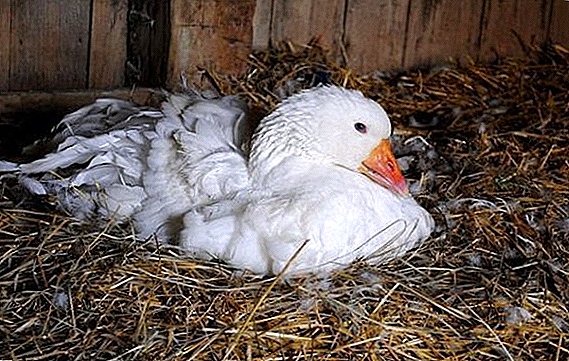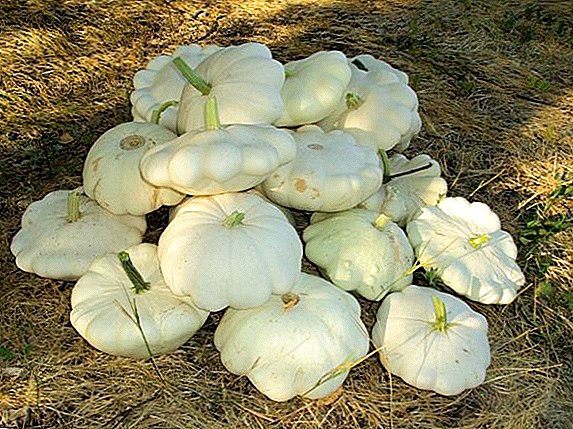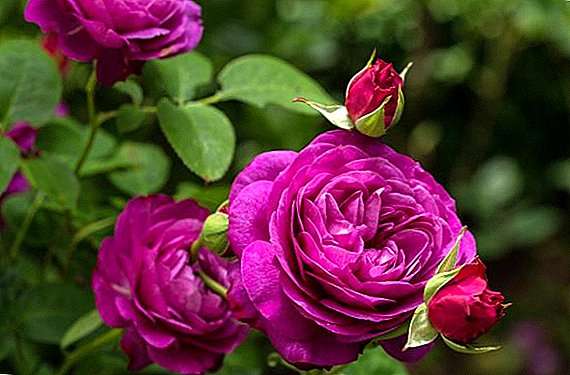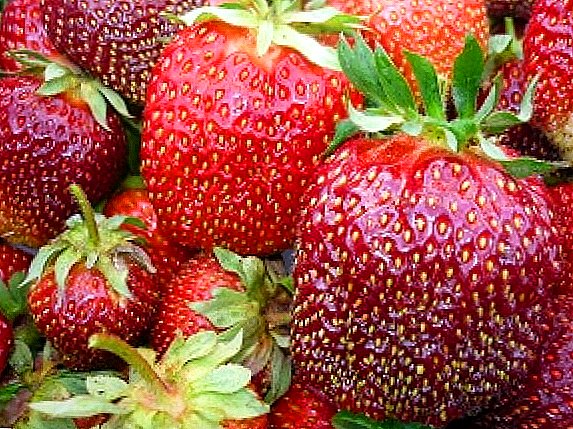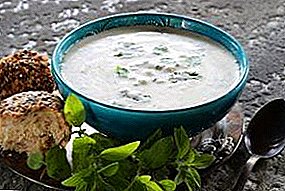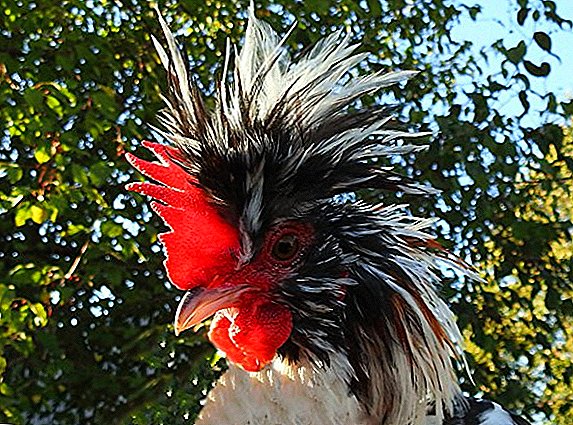 Dwarf breeds of chickens are increasingly attracting the attention of amateur poultry farmers. Breed them in private farms for aesthetic pleasure and diversity. Original appearance, colorful plumage, miniature - these are the distinctive features of dwarf ornamental species. Bantamka is a breed directly descended from wild chickens.
Dwarf breeds of chickens are increasingly attracting the attention of amateur poultry farmers. Breed them in private farms for aesthetic pleasure and diversity. Original appearance, colorful plumage, miniature - these are the distinctive features of dwarf ornamental species. Bantamka is a breed directly descended from wild chickens.
It was first described in Japan in 1645. Today there are 2 types of bantams - calico and Altai. Altai bantamka is the most numerous population among ornamental chickens. The breed is distinguished by excellent appearance, good productivity and the ability to adapt to any climate.
External characteristics
Standard weight bantamok - 0.7 kg for the chicken and 0.9 kg for the rooster. These are medium-sized birds with thick plumage of orange shades.

Breed signs:
- The body is stocky, horizontal, rather wide. The breast and abdomen are round. Additional roundness gives the bird its thick plumage. The neck is medium long, curved.
- The legs and thighs are small. Legs are densely feathered, feathers on paws are long, resembling flared trousers. The tail of the rooster is at a 90 degree angle to the back. The tail of the hens is located at an angle of 45 degrees.
- On the head there is a large feather tuft with a brush back. In the midst of the tuft there is an erect toothed comb of red color. In chickens the comb is small, poorly pronounced. Earrings in chickens are small, mild. The beak is small, yellow. The eyes are large, red-brown.
- The color of the hens is presented in a fox color range with the main feather color from red to brown. Feature color is variegation - the main color is diluted interspersed with black and grayish feathers. The percentage of colors may vary. In a rooster, tail feathers may be black with a green tint, white and red.
Chickens of Araucan, Ayam Tsemani, Hamburg, Chinese Silk, Krevker, Curly, Milfleur, Paduan, Sibrayt, Phoenix, Shabo are bred with decorative aiming.
The color additionally distinguish the following types:
- nut;
- fawn;
- variegated;
- calico

Did you know?Most ornamental breeds of chickens come from China and Japan, where they are valued not only for visual appeal, but for the secret, mystical meaning that Asians endow with these birds.
Character
From the wild ancestors of the Altai bentams, a warlike temper went. In the wild, militancy is an indispensable feature, without which the survival of the species is impossible. The benthams also retained good flight skills, thanks to which they can easily overcome a fence, up to 2 m high.
Extreme activity is another quality required for survival in the wild. Chickens are constantly exploring walking on the subject of insects, larvae, kernels, grass and other food. With all the snooty, the birds coexist well with other birds in the compound.
Bentham is an excellent mother and can easily hatch the offspring of other birds. The hen has a strongly pronounced instinct for caring for offspring, so the hen can lay eggs in a shelter outside the hen house. In this case, you need to wait a couple of days until she comes out for food and trace the location of the clutch.

It is recommended to leave no more than 5 eggs under the bird. Due to the small size of the chicken, she will not be able to heat a larger amount.
Did you know?Despite its small size, the Altai bantamka cockerel breed can repel an attack of a kite.
Puberty and Productivity
Benthams finish growth to 5 months, reaching maximum weight. Chickens at this point begin egg-laying. Their feature is that egg-laying is stable for 3-4 years. It distinguishes them from other breeds.
Egg production ranges from 60 to 130 eggs per year. It is important that the Altai bantam is very dependent on weather conditions: for example, in the winter in an unheated hen house the bird will cease to sweep with the onset of the first cold weather.
The egg mass is 44 g. For dwarf breeds, these are large eggs, because the usual egg weight of a dwarf chicken is 30-35 g. Meat of dwarf breeds is considered more tasty and nutritious than meat of ordinary chickens.

Diet and nutrition
There are no special preferences in food. These are very economical birds that consume about 70-100 g of feed per 1 hen per day. To maintain productivity, chickens need food with high nutritional value and compliance with the norms of vitamins and minerals.
The diet should contain carrots, pumpkins, various herbs. In the presence of green fodder, the total mass of feed consumed increases. In winter, green food can be replaced with germinated grain. Additionally, masters are introduced into the winter ration.
Learn how to give chickens bran, bread, foam plastic, wheat germ, meat and bone meal, fish oil, yeast.
In the mash add:
- boiled potatoes;
- vegetables: pumpkin, carrots, beets;
- bran;
- meat and bone meal;
- cereals;
- cake;
- crushed grain.

The grain part of the feed must include corn - it provides the required amount of carbohydrates and increases the nutritional value of eggs. Carbohydrates are quickly absorbed and give the chicken the necessary energy. 40% of the energy produced is spent on laying the egg.
Therefore, if egg production falls, then one of the reasons may be that the bird lacks energy. Chickens also give wheat grain, barley, millet. The diet includes wheat bran.
The finished feed will provide the bentham with the necessary micronutrients - potassium, calcium, phosphorus, iron, magnesium. In the diet of decorative rocks must be present vitamins and protein. A good addition to the diet is yeast.
Important!In order to provide each chicken with the necessary amount of calcium or other additives - they can be poured into a container separate from the total feed. Then the bird will be able to independently determine how much supplement it needs. The sources of calcium are shell, chalk, egg shells.
Young individuals
In the early days, chickens eat well mashed greens, boiled eggs, and millet. After 7-9 days they are added to the ration starter feed finely ground.

Cottage cheese, yogurt, and vegetables (boiled carrots) are added to the diet consistently. The water in the drinkers should always be fresh.
Chicken feeding schedule:
- 1 week - 8 times a day with an interval of not more than 3 hours between feedings. The rate of feed - 5-10 g;
- 3 week - 6 times a day;
- Week 5 - 4 times a day.
In order to extend the timeframe of a day to 14 hours, chickens are provided with artificial lighting. It is advisable that feeding 6 or 4 times fall exactly in the 14-hour time period. From the second month young chickens are fed 2 times a day.
Familiarize yourself with the rules for caring for chickens after an incubator, using an infrared lamp to heat chickens, and feed chickens.
In the diet of young bantams should be the following components:
- grain - they account for about 70% of the feed;
- animal proteins - meat and bone meal, larvae, worms;
- minerals - calcium, magnesium, potassium, iron, phosphorus, zinc;
- vitamins of group B, vitamins C, D, E;

Young chickens are transferred from starter to industrial feed or to their own feed.
Adult chickens
Before the start of egg-laying (at 5 months) there should be an increased calcium content in the feed. To this end, chickens are given ground egg shells, chalk, and shell rock. Serum and cottage cheese must be present in the diet. During this period, the formation of the reproductive apparatus takes place, the necessary supply of mineral substances is formed.
Learn how to make feed for laying hens, what is the rate of feed for laying hens, what vitamins do chickens need for laying hens for egg production.
In the diet enter the industrial feed for layers. The total mass of feed increases by 5-10 g per week. before the laying of the egg laying hen you need to eat more.
After normalization of egg-laying, the benthams need regular feed for layers. The diet will include wet food in the form of mesh and cereals. For mash can be simultaneously held yeast feed. Chickens still need additional calcium, as well as coarse feed. On walking chickens supplement your diet with animal proteins. 
Did you know?The chicken has no teeth, so chickens always need to put a container with small pebbles. It helps birds digest food.
Content
When organizing places of residence and walking, first of all, features of the breed are taken into account, as well as possible restrictions on contact of fighting breeds with other birds.
Conditions of detention
Birds are well adapted to frosty winters, but during the cold they reduce egg production. Therefore, it is desirable to take care of the warmed hen house.
Requirements for the house:
- The presence of heating in the winter because in cold weather, egg production falls to almost half of what is possible.
- The coop should be free from drafts, with natural light through windows and artificial to increase the length of the day in winter. Lighting also affects egg production.
- The floor should be dry and clean. feathered paws are often infected with fungi, lice, fleas and other parasites.
- The coop is equipped with perches, nests for layers, drinking bowls and feeders.

Requirements for walking:
- soil cover should be from sand and small gravel. This is due to feathering on the feet: wet soil will pollute it too much and contribute to the development of parasites;
- the top of the range should be covered with a grid. Chickens fly very well.
Seasonal moult occurs in the fall during daylight hours. In order to speed up the process, it is necessary to provide the bentham with a reinforced vitamin and mineral complex, which is purchased separately and added to the mash.
Learn how to build a chicken coop and walking for chickens.
Diseases and how to deal with them
Altai bantamka - frost-resistant breed. In the process of selection in chickens of this species developed a good immunity to disease. There are no specific diseases or those to which the birds are extremely predisposed.

If there is an excess of protein in the diet, chickens may suffer from twisted fingers. Like all chickens, bantamkam need to make vaccines in a timely manner and avoid hypothermia. This will keep the young healthy.
Dangerous chicken diseases include:
- infectious diseases: plague, pullorosis, paratyphoid fever;
- lice and other parasites.
Learn about the symptoms and methods of treatment of salmonellosis, Marek's disease, aspergillosis, mycoplasmosis, coccidiosis, infectious bronchitis, a syndrome of reduced egg production, conjunctivitis, salpingitis.At the slightest sign of an infectious disease, a sick bird is isolated, consulted at the clinic with a veterinarian and acquire the necessary antibiotics. In case of contagious diseases, the chicken coop is disinfected with lime mortar, bedding is changed, feeders and drinkers are processed.
Plague belongs to incurable diseases, therefore vaccination is carried out for its prevention. Most infectious diseases are also poorly treatable and are not always promptly noticed. Therefore, they carry out prophylaxis with the help of vitamins D, E and treat all the livestock, when a sick chicken is detected.

To prevent infection by parasites, the litter should be dry, birds should have a container with ashes or sand, with the help of which chickens independently fight against parasites. The presence of louseflies and fleas can be determined by looking more closely at the feathers. Also an indicator of the presence of parasites is sudden molting of the bird. In addition to the bird eaters, ticks, fleas, and lice will hit the birds.
Important!For effective treatment of birds from lousebirds aerosols are applied, which are applied from a distance of 15-20 cm from the bird. It is forbidden to spray the aerosol on the bird's head. Processing is carried out 1-2 times a week.
Herd replacement
Planned replacement of the herd is carried out every 3-4 years, when the egg production of the hens begins to decline sharply. But given that Altai bantams belong to decorative breeds and are not kept for the sake of eggs, there are no obligatory requirements for planned replacement.

Advantages and disadvantages of the breed
Advantages of Altai bantams:
- excellent decorative qualities;
- chickens have sufficiently strong immunity and rarely get sick;
- undemanding and economical in nutrition;
- adapted to life in cold climates;
- stable egg production for 3-4 years;
- chickens can be carried year-round if kept in warm conditions;
- high egg production for dwarf breeds;
- carry eggs with high taste and mineralogical qualities;
- excellent maternal instinct and ability to incubate in chickens.
- need compulsory indoor walking;
- demanding litter in the coop and soil on the site of walking.
Video: Altai bantam breed
Breed Reviews




